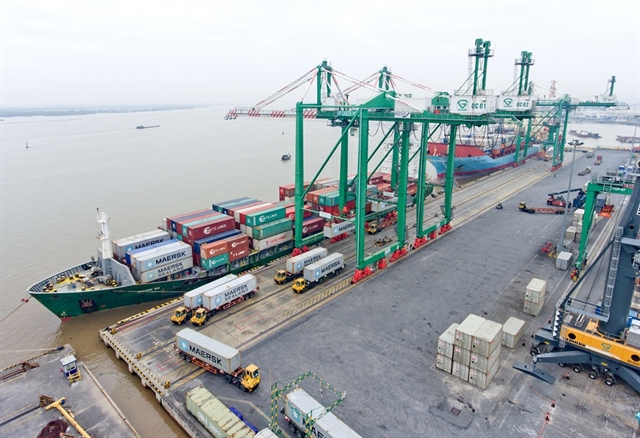 Society
Society


|
| Deputy Minister of Agriculture and Environment Võ Văn Hưng speaks at the conference. — VNS Photo Tố Như |
HÀ NỘI — Despite global headwinds from the COVID-19 pandemic, climate change and economic uncertainty, Việt Nam's two national target programmes on new-style rural development and sustainable poverty reduction have continued to deliver strong and wide-ranging results.
Speaking at a press conference in Hà Nội on Friday, Deputy Minister of Agriculture and Environment Võ Văn Hưng said the two programmes have not only achieved significant milestones but also reflected the Government’s deep commitment to sustainable development and improving people’s livelihoods.
“These are not just figures. They are indicators of progress and public satisfaction. Every house built, every livelihood created is another step towards ensuring no one is left behind,” he said.
According to the ministry, by the end of 2025, the number of poor and near-poor households nationwide is expected to drop to over 1.250 million, meeting 52.49 per cent of the original target, and surpassing the National Assembly’s goal of halving poverty by 2.49 percentage points.
The rural development programme has also made strong gains. As of May, around VNĐ3.7 million billion (US$141.6 billion) had been mobilised for its implementation during the 2021–2025 period.
Nearly 80 per cent of communes, 6,055 out of 7,669, have met the national criteria for new-style rural areas.
Sixty provinces and cities have at least one district-level unit recognised for completing the programme’s tasks, while ten provinces have fulfilled all objectives.
The One Commune, One Product (OCOP) programme has also accelerated, with more than 16,540 products nationwide rated three stars or higher, an increase of over 12,000 since 2020, boosting local economies by leveraging regional strengths.
In poverty reduction, over 10,000 models and projects have been launched, attracting more than 200,000 participating households. Among these, 6,200 hi-tech farming initiatives have helped transform agricultural practices and improve incomes.
Meanwhile, nearly 125,000 workers from poor or near-poor households have received job support, far exceeding the original target of 100,000.
On the social welfare front, some 90,000 homes have been newly built or renovated for poor households in disadvantaged areas, supporting the national campaign to eliminate makeshift housing. The stunting rate among children under 16 in difficult regions has also dropped to 25.42 per cent, well below the national target of under 34 per cent.
However, challenges remain.
Deputy Minister Hưng pointed out that some localities still have poverty rates above 50 per cent, and over 70 per cent if measured by the new poverty standard. Issues such as urban poverty, limited access to basic services, low-income informal labour, population ageing, ethnic disparities and climate impacts will require stronger efforts in the next development phase.
He said a national review conference on the two programmes, chaired by the Prime Minister, will be held on Sunday to assess progress and set future priorities. — VNS









